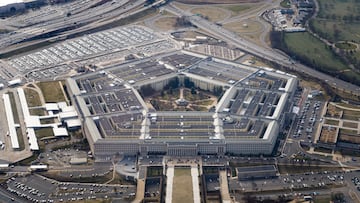MIDDLE EAST
What is the Pizza Meter? The signal that spiked on Saturday during Iran’s attack on Israel
On April 13 there was a surge in pizza orders from U.S. government buildings such as the White House, the Pentagon, and the Department of Defense.

Pizza and the Iran’s attack on Israel might seem unrelated, but just like a butterfly flapping its wings can cause a storm on the other side of the world, one event can create unexepected effects as was seen in the U.S. on the day of the bombardment of Israel. In this case the unexpected effect was orders of the iconic Italian dish serving as an indicator of serious impending events.
The term “Pizza Meter” refers to seeing an unusual spike in pizza orders last Saturday from pizzerias near key U.S. government buildings such as the Pentagon, the White House, and the Department of Defense headquarters. The thinking goes that where there is a potential major crisis, far more staff than usual are found working at these buildings as they deal with the situation and plan potential actions, and while they are stuck in the office working, they call out for pizza to keep them going.
The phenomenon gained attention when a user on X (formerly Twitter) posted a screenshot from Google Maps showing real-time activity at pizza outlets, particularly at a Papa John’s in Washington D.C., after 6:00 PM local time. This coincided with Iran launching drones into Israeli territory. The screenshot showed unusually high activity at the pizza outlet at the time of the drone launch.
A similar trend was noted at Extreme Pizza. User @donald_PL_ shared a snapshot showing busy conditions at a branch near the Department of Defense, similar to the previous example. According to this user, the “Pizza Meter” can be used to assess U.S. involvement in global crises based on the activity levels at local pizzerias.
The pizza effect: origins in the Cold War
The term, though highlighted anew by recent events in the Middle East, originated during the Cold War. At that time, Soviet intelligence services monitored similar indicators, tracking excessive pizza deliveries by couriers to gauge alertness to potential global crises. Their intelligence source was known as Pizzint. In fact, spikes in pizza orders from government buildings have also been recorded during other military events, such as the invasion of Kuwait and the Iraq War.





